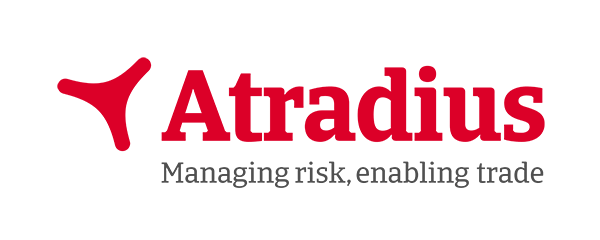

Australia facing a perfect storm of insolvency
Insolvency
According to recent research by Atradius economists1, the Australian insolvency rate is expected to climb during 2022 and 2023. In fact, along with South Korea, Poland, France and Norway, Australia comes near the top of the table of countries where the 2023 growth rate of insolvencies is expected to be on the high side. So why is this?
There isn’t a single reason why more businesses may enter insolvency in the next year. Rather, several factors have come together to create an environment of heightened insolvency risk. These include the withdrawal of Government fiscal support, reinvigorated Australian Tax Office (ATO) debt collection, global supply chain challenges, high commodities prices, severe weather events, rising inflation and increased interest rates.
Federal and state Covid-19 support insulated businesses
One clear trend is that the economies currently facing increased insolvency risks all enjoyed robust fiscal support from their governments over the past two years. One consequence of this is that companies that may have gone bust in normal times were saved from insolvency. As support is withdrawn, these ‘zombie businesses’ are now at increased risk of failure. In the countries where government support was minimal or non-existent, the businesses at risk of failure have become insolvent already.
The Tax Office holiday is over and interest rates are rising
Business support hasn’t just come from government interventions. Covid-19 business lifelines were also offered by banks and the ATO; support that is now beginning to be withdrawn. The Reserve Bank of Australia has recently raised the cash rate target from 10 basis points to 35 basis points. A statement issued by the Governor, Philip Lowe, said2: “The Board judged that now was the right time to begin withdrawing some of the extraordinary monetary support that was put in place to help the Australian economy during the pandemic.”
In early 2020, the ATO halted its debt recovery action and kept its finger on the pause button up until the end of 2021. The Tax Office will take time to get through the backlog of tax debt that has built up over that time, but there are already reports of an increase in Garnishee Notices and Director Penalty Notices. In a recent response to an Australian National Audit Office report, the Tax Office said: “We will make more use of our debt recovery powers now that firmer recovery action has recommenced following the pandemic.3” More aggressive tax debt collection is likely to lead to an increase in business insolvencies.
Where’s my order? Supply chain headaches continue
Much of the supply chain disruption that emerged following the outbreak of the pandemic is still ongoing. According to the Australian Bureau of Statistics4, more than a third of all businesses reported supply chain issues in February 2022 (37%). Although this is actually an improvement on the previous month’s 47%, this still means a significant proportion of businesses are struggling with trade delays. What’s more, three-quarters of businesses reported increased transport costs. While the pandemic certainly shone a light on supply chain disruptions, many issues impacting supply chains predate Covid-19 and are ongoing today. This is particularly true of the severe weather events impacting the country which are predicted to become more extreme, according to the sixth Intergovernmental Panel on Climate Change Evaluation published in 20215.
As explored in the Atradius webinars and white papers, From Crisis To Opportunity, What’s The Future of Trade6, it's likely the pandemic exposed fundamental weaknesses in global supply chains. Moving forward we expect to see significant changes in some industries. These may range from a move away from lean manufacturing and just-in-times models, to some reshoring and a greater use of smart technologies to track products in real time from the lab or factory floor, to the store shelf or delivery van.
One of the greatest impacts that supply chain issues can have on businesses is unpredictability. Planning is hard when you cannot be sure when, or even if, your materials will arrive. As Jonathan O’Doherty, Head of New Business Atradius Australia explained: “There is currently a huge level of uncertainty and unpredictability around supply chains. A lot of businesses are beginning to order their product a lot earlier, which in turn can put added pressure on their working capital and cash flow. Lockdowns created a shortage of workers and production capacity around the world at a time when demand for consumer goods surged with people working from home. This bottleneck in supply chain capacity has seen some of our clients struggle to get raw materials on time, key components for their manufacturing or product direct to retail. We have seen cases where customers have requested air freight over sea freight from their suppliers despite it being significantly more expensive.”
He added: “In fact during the last month or so, we are seeing levels of applications for increased credit insurance cover that we have not seen since 2019. This is because our customers are seeing increased costs in everything from transport and freight to labour and raw materials and this is translating into a need for higher credit limits.”
Spiralling costs and rising inflation
The high costs of commodities and increasing inflation are also factors that can nudge businesses closer to the precipice of insolvency. Although not as high as some of the world’s economies, current rates of inflation show the steepest rise in the cost of living in more than 20 years. Responding to the recent inflation increases, Treasurer Josh Frydenberg said this was a reminder of the “complex and volatile” economic environment and pointed to international pressures such as the war in Ukraine, gas prices and supply chain disruptions7. He said: “Australia is not immune from the international pressures driving up inflation."
One industry currently being hit hard by this perfect storm of rising costs and reduced support is construction. Two recent high-profile insolvencies include Probuild and Condev. Jonathan O’Doherty said: “One of the reasons construction is having such a tough time at the moment is that many businesses won tenders on the basis of fixed costs. However, they have not been able to keep up with spiralling prices and have seen their margins eroded. Others have been negatively impacted by a domino effect, where a customer’s customer is in trouble, causing a negative ripple down the supply chain. Businesses are doing their best to protect themselves through devices such as Rise and Fall Clauses and credit insurance to protect their cash flow. But it is definitely a difficult time right now.”
It's not just construction feeling the pinch. Hospitality, tourism and education (international students) were badly affected when the borders were closed, and many businesses are finding that trade is slow to pick up. This is particularly the case for visitors from China where numbers are still depressed. Many hospitality businesses are also reporting difficulty in staff recruitment.
There is no immediate end in sight to the challenges currently facing businesses throughout Australia. Although there will be an element of “natural wastage’ among businesses that have only survived thanks to Covid-19 fiscal support measures, in an environment of heightened insolvency, no business is too big to fail. “Businesses would be wise to take increased steps to protect their accounts receivable”, said Jonathan O’Doherty. “There is a perfect storm of converging challenges on the horizon and looking like it will hit Australia significantly in the second half of 2022 and beginning of 2023. Your business model may be strong and your most important customer may be solvent. But what about their customer? There will be an uptick in insolvencies and now is the time for business to take action to protect themselves from the increased risks.”
2https://www.rba.gov.au/media-releases/2022/mr-22-12.html
4https://www.abs.gov.au/media-centre/media-releases/less-businesses-supply-disruptions
6https://group.atradius.com/virtual-event-series/from-crisis-to-opportunity-event4.html

